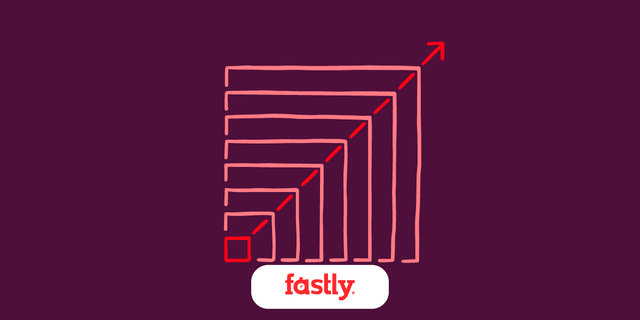Tous les articles
Page 2 sur 11
-
Déni de service distribué en juin
Liam Mayron, David King
Le rapport de juin sur les attaques par DDoS révèle une attaque de plus de 250 milliards de requêtes contre un fournisseur de haute technologie et l'émergence de Byline Banshee. Obtenez des informations clés et des conseils exploitables.
SécuritéInformations sur le secteur
-
Reprendre le contrôle : comment les éditeurs peuvent contrer le scraping indésirable par l'IA
John Agger
Dites stop à l'extraction de contenu par l'IA. Découvrez comment les éditeurs peuvent s'opposer à la collecte de données indésirables grâce à l'AI Bot Management de Fastly et aux nouvelles opportunités de monétisation.
Sécurité2 de plus
-
Débloquez des performances web plus rapides : les données qui sous-tendent les avantages de Fastly par rapport à Akamai
Lucas Olslund
Découvrez pourquoi la migration d'Akamai à Fastly améliore les performances web. Nos données montrent un temps de chargement du premier octet 57 % plus rapide et un LCP 17 % plus rapide, basés sur des données CrUX réelles.
CDN et distributionPerformances
-
Une protection contre les attaques par déni de service distribué automatisée et sur mesure
Liam Mayron, David King
Affinez votre protection contre les attaques par déni de service distribué avec la mise à jour Precise Defense de Fastly. Gagnez en flexibilité et autorisez le trafic légitime tout en atténuant automatiquement les attaques.
ProduitSécurité
-
La gratuité du transfert sortant et des opérations avec Fastly Object Storage révolutionnent l’optimisation des images
James Sherry
Optimisez vos images sans vous ruiner grâce à Fastly Object Storage. Profitez de performances supérieures sans frais de sortie et opérationnels. Évoluez librement et itérez rapidement.

-
Enquête Fastly AppSec : IA et sécurité en 2025
David King, Natalie Griffeth
Découvrez l'enquête AppSec 2025 de Fastly sur l'impact de l'IA, les changements de budget et les tendances en matière de sécurité sur fond de bouleversements économiques. Obtenez des informations essentielles dès maintenant !
SécuritéInformations sur le secteur
-
Comment contrôler et monétiser le trafic des bots IA avec Fastly et TollBit
David King, Lorraine Bellon
Monétisez le trafic des bots IA ! Fastly Bot Management et TollBit se sont associés pour offrir un contrôle granulaire, des performances et une flexibilité pour gérer les bots et débloquer de nouveaux revenus.
Sécurité2 de plus
-
Pouvons-nous rendre l'IA écologique ? Les grandes questions sur la durabilité de l'IA, répondues par le cofondateur de Fastly
Alina Lehtinen-Vela
L'intelligence artificielle peut-elle être écologique ? Simon Wistow de Fastly aborde de grandes questions sur la durabilité de l'IA, soutenues par des données originales de notre enquête AI Energy Pulse Check 2025.
CDN et distribution2 de plus -
Premiers pas avec TypeScript sur Fastly Compute
Katsuyuki Omuro
Vos premiers pas avec TypeScript sur Fastly Compute, rien de plus simple ! Apprenez à ajouter un typage statique à vos projets JavaScript pour un développement efficace.
Compute3 de plus
-
Fastly obtient le statut « Déployé sur AWS »
Chris Ritter
Fastly obtient le statut « Déployé sur AWS », améliorant ainsi les achats et les économies pour les utilisateurs d'AWS Marketplace. Découvrez dès aujourd'hui nos solutions CDN et de sécurité optimisées pour le cloud.
CDN et distribution3 de plus
-
DDoS en mai
Liam Mayron, David King
Rapport déni de service distribué de mai 2025 : 2 nouvelles attaques chaque minute. Obtenez des informations clés, des tendances du trafic et des conseils de sécurité exploitables.
Sécurité
-
Point de vue du CISO : Rapport sur les informations de menaces du premier trimestre 2025
Marshall Erwin
Découvrez l'avis du CISO Marshall Erwin sur le rapport de Fastly concernant les menaces du premier trimestre 2025, y compris les évolutions des attaques sur l'e-commerce, les tendances du trafic des bots et les risques de la chaîne d'approvisionnement.
SécuritéInformations sur le secteur
-
Opérations de sécurité plus intelligentes : adopter la détection en tant que code
Simran Khalsa, Gary Harrison, 1 de plus
Modernisez la sécurité avec la détection-as-code. Apprenez à automatiser la détection et la réponse aux menaces en utilisant DevSecOps et des outils comme le simulateur WAF de Fastly.
DevOps2 de plus
-
AppSec au 1er trimestre 2025 : tendances du dernier rapport de Fastly
David King
Rapport sur les menaces du T1 2025 de Fastly : informations clés sur les attaques web, le trafic des bots et comment défendre vos applications et API. Lire le rapport complet maintenant.
Sécurité2 de plus
-
Plus de dix ans plus tard : l'évolution de l'Instant Purge™
Tyler McMullen, Julien Benoist
Découvrez l'évolution sur dix ans de la technologie Instant Purge™ de Fastly. Découvrez notre approche décentralisée, les défis rencontrés et les innovations en matière de scalabilité.
Performances2 de plus
-
Construire un serveur MCP réellement sécurisé avec Fastly Compute
Kay Sawada
Créez un serveur MCP sécurisé et évolutif avec Fastly Compute. Apprenez à traiter les vulnérabilités et à assurer des performances fiables pour vos applications LLM.
Compute4 de plus
-
DDoS en avril
Liam Mayron, David King
Rapport déni de service distribué d’avril 2025 : les attaques aux États-Unis augmentent. Obtenez des informations clés, des tendances du trafic et des conseils de sécurité exploitables. Protégez vos applications dès maintenant !
Sécurité
-
Using cURL to Test Origin Server Responses
Matt Torrisi
Curl, or cURL, is a utility that’s shipped by default on operating systems like MacOS and many Linux distributions that allows you to send an HTTP request to a URL and receive the result. In this post, we’ll walk you through how to use the tool to test an origin server’s response.
EngineeringPerformances
-
Sécurité sans obstacles : pourquoi un simulateur de WAF transforme les flux de travail DevSecOps
Daniel Corbett, Liam Mayron, 1 de plus
Découvrez le simulateur pare-feu d’applications web de Fastly et comment il transforme les flux de travail DevSecOps en permettant des tests de sécurité intégrés, continus et automatisés.
DevOps2 de plus
-
L'Internet est physique, alors repensons sa durabilité
Eoghan Kelly
Explorez l’impact environnemental de l’infrastructure physique d’Internet et les nouvelles approches pour une croissance numérique durable.
Informations sur le secteurCDN et distribution

















